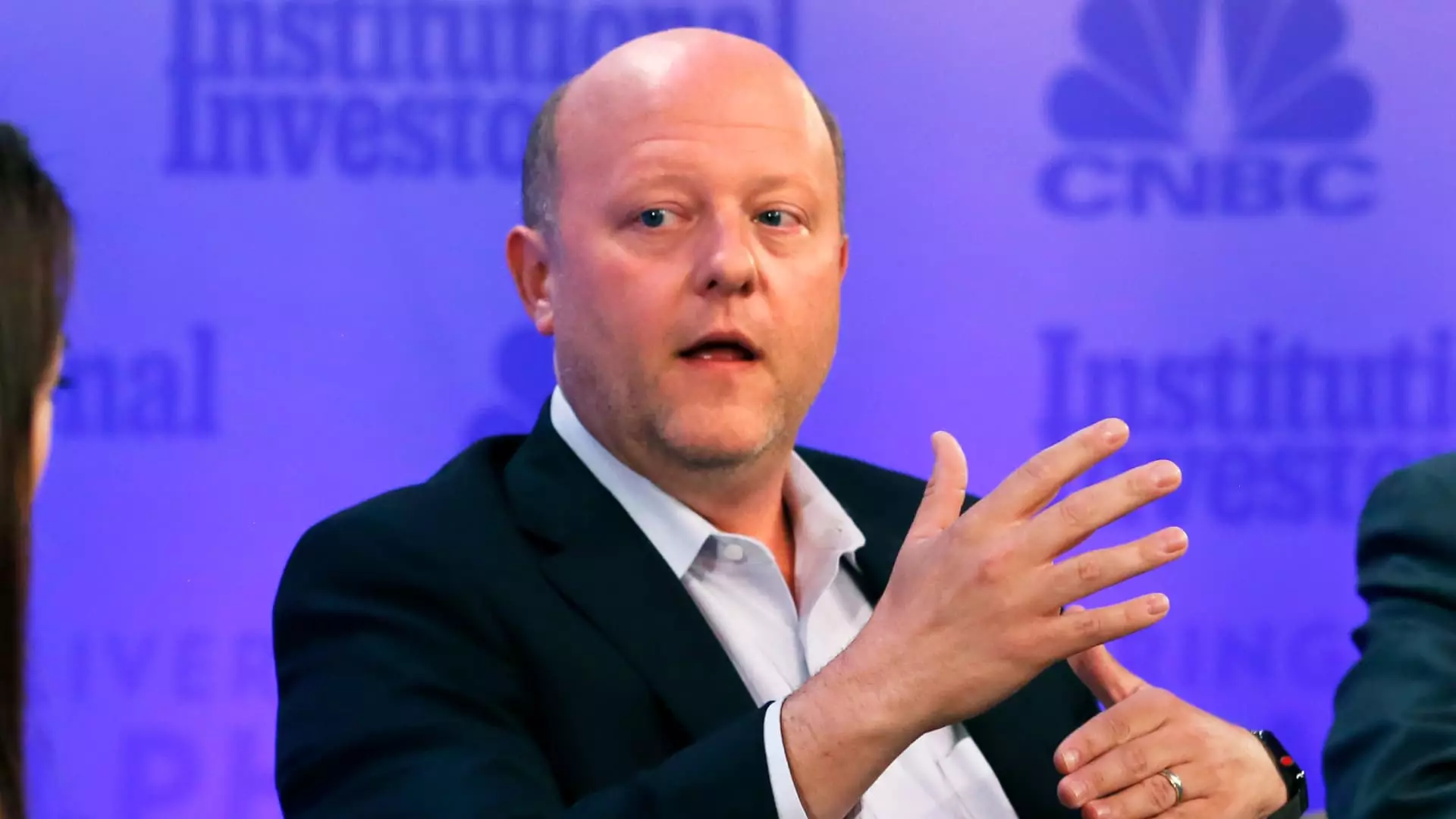Circle, the masterminds behind the USDC stablecoin, have officially announced their intention to embark on an initial public offering (IPO) on the New York Stock Exchange, emerging with ambitions that echo through the crypto corridors. In a time rife with uncertainty and volatility in the tech sector, Circle’s move stands as a beacon of both opportunity and skepticism. As they’ve filed their prospectus with the SEC, the anticipation of a $5 billion valuation under the ticker CRCL signals a decisive pivot towards mainstream finance. Yet one must wonder: Is the timing right for such a bold statement?
With high-profile institutions like JPMorgan Chase and Citigroup as lead underwriters, the weight of the financial establishment momentarily lends a credibility that the company desperately needs. However, the stormy seas of tech stock volatility could hinder their momentum significantly. The unpredictable nature of recent tech IPOs casts a long shadow over this venture. In 2022, when previous attempts to access public markets collapsed under regulatory scrutiny, questions about stability and resilience emerged. Thus, while their aspirations are commendable, the precarious nature of current market dynamics raises significant doubts.
Financial Growth Metrics Raise Eyebrows
Circle’s financial performance is an encouraging sign, with revenue climbing from $772 million in 2022 through to $1.68 billion in 2024, alongside a net income of $156 million. Observing such growth, one might assume that everything is on an upward trajectory. However, it’s critical to take a closer look at the year-on-year performance. The dip from $268 million in net income last year reveals unsettling caution under the surface.
The financials reveal that despite a substantial increase in revenue, the profitability ratio is heading in the wrong direction. Why is this pertinent? It indicates that while Circle is attracting new business, it may be leaning too heavily into a structure that does not guarantee sustainable growth. This might make investors skeptical about their primary financial model—predicated largely on the performance of USDC—when global economic strains could shift rapidly.
Stablecoin Market: A Double-Edged Sword
Circle’s prominence as the issuer of USD Coin (USDC) provides a mixed blessing. While USDC is the second-largest stablecoin, creating a sizable portion of the total market cap, it also means that Circle is subject to the same market pressures that plague its competitors like Tether. The fact that Tether commands 67% of stablecoin dominance means that Circle is operating under the weight of intense competition.
Moreover, the potential political tailwinds in the U.S. that seem to favor crypto legislation can be perceived as both a risk and an opportunity. While there’s optimism around the idea of governmental recognition and regulation, there’s the ever-present threat of miscalculations and overreach that could set the entire sector back. The rush to secure regulations could ultimately mirror a misguided prioritization of speed over stability, risking the foundations upon which the crypto market is built.
Market Implications and the Cross-Border Ecosystem
The impact of Circle’s IPO and the growth of the stablecoin ecosystem will most certainly ripple through the wider financial markets. As firms such as Robinhood and Coinbase adapt to a market increasingly influenced by stablecoins, there is a necessity to rethink traditional trading paradigms. Circle’s agreement to share 50% of USDC revenue with Coinbase further blurs the lines between competition and partnership, developing a strategic framework poised to reshape crypto trading.
However, this strategy carries risks; reliance on a singular revenue stream may introduce vulnerabilities. The notion of USDC becoming “the number one stablecoin” could cloud judgment, leading to complacency rather than innovation. This competitive mentality can easily result in a race to the bottom if companies prioritize market share over quality and stability—betraying crypto’s foundational ideals.
Final Thoughts on Circle’s Future
In an era where crypto is grappling with its legitimacy, Circle’s ambition to enter the public arena is laden with enormous potential and peril. Their growth metrics, potential partnership alignments, and economic implications position them as frontrunners in a crowded field. Still, the specter of regulatory challenges, profitability concerns, and market volatility should not be ignored. As investors, regulators, and the public watch closely, Circle’s bold venture to the NASDAQ could either crystallize a new era for crypto or expose deeper vulnerabilities lurking just beneath the surface. The stakes have never been higher, nor the outlook more uncertain.

